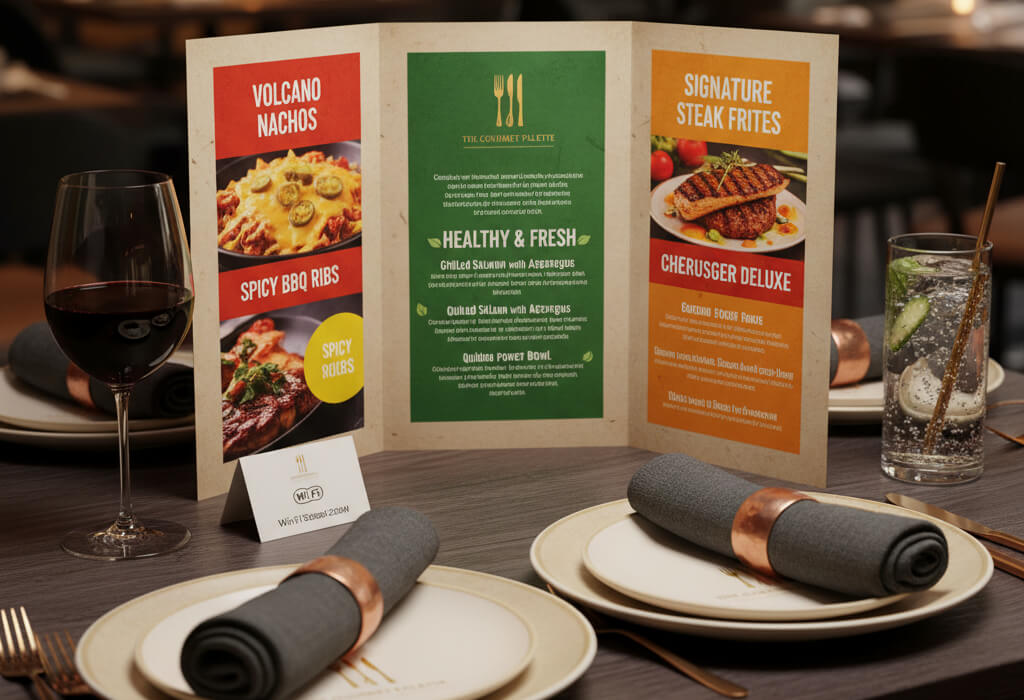October 09, 2025

Colors aren’t just for decoration — they have a psychological impact on diners’ choices and appetites. Restaurant owners can strategically use colors in menus, websites, and interiors to influence both what and how much customers order. By understanding color psychology, restaurants can enhance their brand identity, encourage specific behaviors, and create a more engaging dining experience.
Warm colors, particularly red and yellow, are known to stimulate appetite and promote a sense of urgency. These colors create excitement and draw attention, making them ideal for fast-food and casual dining establishments where speed and quick service are key.
Many fast food chains like McDonald's and Burger King use red and yellow because they know these colors encourage customers to make quick decisions and eat faster.
Learn More: Why Small Restaurants Must Invest in Online Ordering
Related Resource: The Psychology of Colors in Restaurant Design
Green is associated with health, freshness, and sustainability. It's ideal for restaurants with plant-based or organic offerings because it communicates purity and natural ingredients. Blue, on the other hand, can suppress appetite but is often used in upscale, fine dining or luxury restaurants where a calm, serene atmosphere is desired.
Many health-conscious or farm-to-table restaurants incorporate green in their designs, both on menus and interiors, to reinforce their fresh, sustainable identity.
Learn More: How to Integrate Your POS with Your Website
Related Resource: The Impact of Color in Food Choices and Perceptions
The color scheme of your restaurant’s menu, website, and interior design should align with your overall brand identity. When colors are used consistently across all customer touchpoints, they help to reinforce your brand, improve recognition, and establish trust. A cohesive color palette builds a stronger emotional connection with diners, making them more likely to return.
For example, a modern, minimalist restaurant might use black and white with metallic accents to convey elegance, while a family-friendly eatery might opt for bright, warm colors to evoke cheerfulness and inclusivity.
Read More: Restaurant Branding 101: Why Your Online Identity Matters
Related Resource: How to Build a Cohesive Brand for Your Restaurant
Beyond menus and interiors, the color choices you make on social media, websites, and email campaigns can have a significant impact on how customers engage with your brand. When used strategically, colors can subtly guide behavior — from boosting click-through rates on websites to encouraging customers to take action in email campaigns.
For example, if you’re running a seasonal promotion or limited-time offer, using red or orange in the visual design will create urgency and excitement.
Check Out: 5 Low-Cost Marketing Wins for Restaurants
Related Resource: Color Psychology in Restaurant Marketing
When it comes to restaurant design and marketing, color isn’t just a decorative choice; it’s a powerful tool for shaping customer behavior. By strategically selecting and using colors in your menu, branding, and digital presence, you can influence customers’ emotions, appetites, and overall experience.
Whether you’re trying to create a calming atmosphere for a fine-dining restaurant or a vibrant, energetic environment for a fast-casual space, understanding color psychology will help you craft the perfect ambiance and drive customer engagement.
By understanding how different colors influence customer behavior, restaurant owners can create a more immersive and effective dining experience. Would you like to explore more about color theory or how to incorporate color psychology in specific marketing campaigns? Let me know how I can assist you further!
Stay up to date with the latest tips, expert insights, product reviews, and step-by-step guides to help you grow, create, and succeed—no matter your industry or passion.